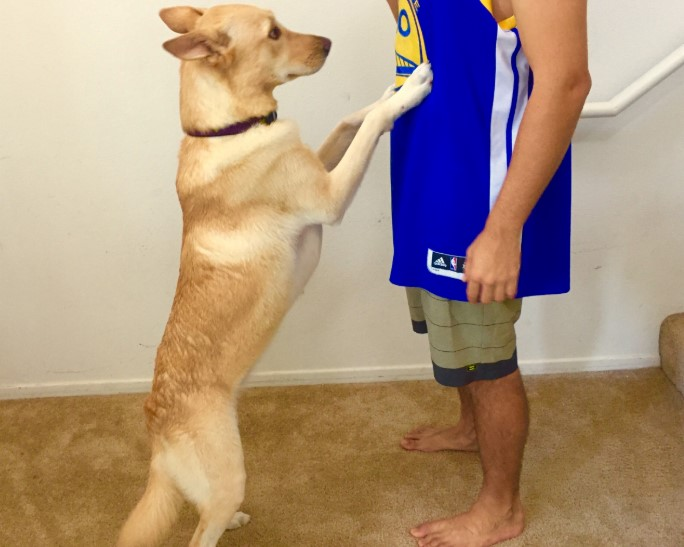

What are some key behaviors that dog owners should pay attention to in order to better understand their dog's emotions, needs, and overall well-being? How can interpreting these behaviors help create a stronger bond between humans and their furry companions?
Understanding a dog's emotions, needs, and overall well-being is crucial for building a strong bond between humans and their furry companions. By paying attention to key behaviors, dog owners can gain insights into their dog's state of mind and provide appropriate care and support. Here are some important behaviors to observe:
1. Body Language: Dogs communicate primarily through body language. Paying attention to their posture, tail position, ear position, and facial expressions can provide valuable information about their emotions. For example, a relaxed and wagging tail, loose body posture, and ears in a neutral position indicate a content and relaxed dog. Conversely, a tucked tail, stiff body, and ears pinned back may indicate fear or anxiety.
2. Vocalizations: Dogs use different vocalizations to express their emotions and needs. Recognizing the various sounds, such as barking, growling, whimpering, or whining, can help understand what the dog is trying to communicate. For instance, a high-pitched and continuous bark may indicate excitement or alertness, while a low growl can signal aggression or discomfort.
3. Eye Contact: Eye contact is an important aspect of canine communication. Dogs use eye contact to convey different messages. Direct eye contact can be seen as a challenge or threat, while avoiding eye contact may indicate fear or submission. Understanding these cues can help humans respond appropriately and avoid potential conflicts.
4. Tail Wagging: Contrary to popular belief, a wagging tail does not always indicate a happy dog. The position, speed, and direction of the wag can reveal a dog's emotional state. A broad, relaxed wag from side to side often indicates a friendly and relaxed dog. However, a stiff, high wag with a tense body may signal aggression or fear.
5. Licking and Yawning: Dogs may lick their lips or yawn in situations of stress, anxiety, or discomfort. Observing these behaviors can help identify when a dog is feeling uneasy or overwhelmed. For example, if a dog licks its lips while being approached by a stranger, it may be a sign of nervousness.
Interpreting these behaviors can strengthen the bond between humans and their dogs in several ways:
a. Enhanced Communication: Understanding a dog's emotions and needs allows humans to respond appropriately, providing comfort or addressing any concerns. This promotes effective communication and trust between the dog and its owner.
b. Tailoring Training and Enrichment: Recognizing a dog's emotional state through their behaviors can help tailor training methods and provide appropriate mental and physical stimulation. For instance, if a dog displays signs of fear or anxiety in certain situations, gradual desensitization and positive reinforcement techniques can be used to build confidence and reduce stress.
c. Preventing Aggression and Conflict: By interpreting a dog's body language and recognizing signs of fear or aggression, humans can proactively manage situations to prevent conflicts. This helps create a safe and comfortable environment for both the dog and its owner.
d. Strengthening the Human-Dog Bond: When humans are attentive to their dog's emotions and needs, they can respond appropriately, providing comfort, reassurance, and a sense of security. This fosters a strong bond based on trust, understanding, and empathy.
In conclusion, paying attention to key behaviors such as body language, vocalizations, eye contact, tail wagging, licking, and yawning can provide valuable insights into a dog's emotions, needs, and overall well-being. Interpreting these behaviors helps humans respond appropriately, tailor training methods, prevent conflicts, and strengthen the bond between humans and their furry companions.
Related Posts
© 2025 Invastor. All Rights Reserved

User Comments
Alfred Kennedy
a year ago
It sounds like a mix of body language and expressions.
Todd Martin
a year ago
Definitely. And then there's the famous "puppy eyes." Those soulful gazes often mean they want something from you – whether it's food, attention, or even a walk.
Tracy Jones
a year ago
Well, there's a lot to observe. A wagging tail usually indicates happiness, but the speed and height of the wag can tell you more about their excitement level. And don't forget about those ears – upright ears usually mean attentiveness, while flattened ears can indicate fear or submission.
Chris Collins
a year ago
So, what are some common behaviors that dog owners should really take notice of?
Johannes Smith
a year ago
It's fascinating how much our dogs communicate through their behaviors. From their wagging tails to their curious sniffs, they have a language all their own.